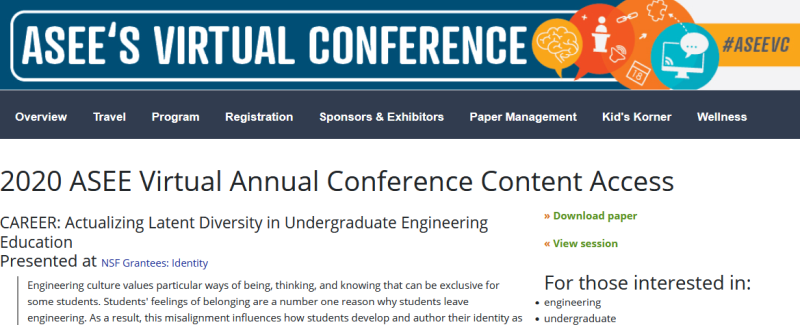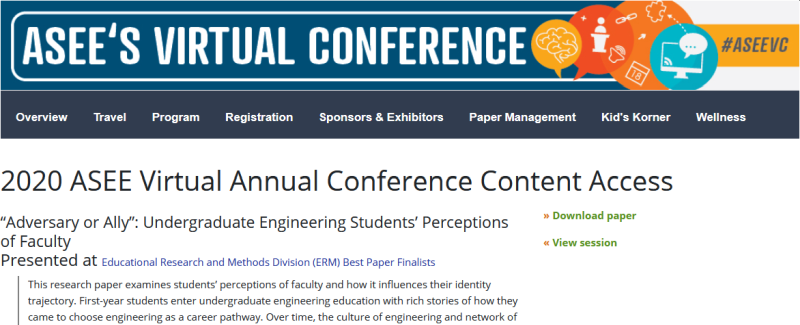Allison Godwin
Brianna Shani Benedict
Jacqueline Ann Rhode
Dina Verdín
Aaron Robert Hamilton Thielmeyer
Herman Ronald Clements III
Zhihui (Sherry) Chen
Excerpt: Cultivating a culture of inclusion is critical to engineering education. The environment in which students learn shapes not only their competencies but also who they become or their identities as engineers. Developing an engineering identity has been found to be important for a number of different outcomes including academic and personal development [1]–[5] as well as retention [6]–[8]. Students form their engineering identity in relation to the ways of being, thinking, and knowing that are valued in engineering culture. As a result, students who do not align with the cultural values in engineering may experience a lack of belonging [9], [10], which can ultimately lead to negative experiences and even attrition. For example, one of our participants, Mark, expressed that he loved studying mathematics, but he felt that “there wasn’t much room for creativity in engineering”. This mismatch in his goals and values led him to switch out of engineering to major in business. Ultimately, he felt that this change allowed him to be exposed to more diverse ways of thinking about problems in business applications.


